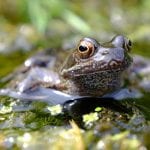The night snake or Hypsiglena torquata is part of the colubrid snake family. This snake species is not a common species because of its availability. It does not have a threat to its population, but it has very good hiding and camouflaging skills; that is why hunters won’t be able to take it into captivity. In this article, we’ll know more about the interesting facts about night snakes.
What Do They Do Like?

The night snakes are characterized by its flat head that gives an illusion that it is triangular-shaped. It is in color light brown, pale gray, or usually beige in color. It’s back, sides and neck have brown or dark grey blotches and have a white or yellowish belly. It’s dark or black bar behind its eyes compliment the color of its upper labial scales, which is in white or pale gray that appears to be smooth and glossy. They have an average length of 30–66 cm (12-26 inches). There is no major difference in males from females, but the females appear to be longer than the males.
Where Do They Live?
The night thrives in dry, hot areas, specifically in British Columbia, Canada, and the western United States that extends from Mexico until Texas. It has a lot of habitats that include deserts, grasslands, woodlands, thorn scrub, chaparral, sagebrush flats, rivers, wetlands, and mountain meadows. They can both comfortably stay both in sandy and rocky areas, usually in other mammal’s burrows as long as it is in elevations over 8,500 ft (2,600 m).
In captivity, for them to get acquainted in their new environment, make sure that it has a lot of hiding spots since they spend most of their time hiding and since they are nocturnal, it is advisable to place their housing in a place where you can easily turn the place dark such as in a room. So as not disrupt their normal lifecycle, feed, bathe, and play with them at night time or when the environment is dark.
What Do They Eat?

They have mildly venomous saliva that can allow them to eat prey that is smaller and slightly larger than them. Most of their diet in the wild consists of other juvenile snakes such as rattlesnakes, eggs of other snakes and reptiles, frogs, all kinds of lizards, salamanders, frogs, rodents and various insects. In captivity, they are usually given rodents, whether alive or frozen and different kinds of insects. In captivity, the night snakes may have difficulty eating, especially when they are still new to their environment, so make sure to give them live prey to give them the feeling that their new environment feeds them. After a few sessions of feeding, that is the time that you can give it frozen or pre-killed prey.
How Do They Reproduce?
The night snake’s breeding season is between April to July. Both males and females sexually mature when they reach their first year. They are oviparous species that are expected to lay about 3 to 9 eggs in rocky areas or in abandon burrows of mammals. These eggs are expected to hatch within two months.
How Do They Behave?

When the night snake is threatened or disturbed, they may flatten their heads, coil tightly, and vibrate their tails with a loud hissing sound. They are known to be a rear-fanged venomous, but their venom is only fatal to other animals but not to humans. They are described as being secretive. As their name implies, they are nocturnal, where they tend to be active in the late afternoon and at night time or at dawn and dusk, making them a crepuscular species. During the hottest days of summer, they aestivate or remain inactive, like what they do when they hibernate during the winter season.
How Do They Communicate With Each Other and to the Environment?
The night snakes use their vomeronasal systems and olfactory senses to feel what’s on their environment. Their forked tongues that are filled in with neuroreceptors that have the ability to detect different kinds of elements and chemicals that may harm them. Like other snakes, they make use of vibrations that they can feel in their bodies as well as their strong sense of hearing to detect any motion from their prey and predators.
Who Are Their Predators?

They are are a favorite prey upon by nocturnal mammals such as owls, bobcats, red-tailed hawk, and other large snakes.
What is their Conservation Status?

The night snakes are good at camouflaging, and since they are nocturnal, they are not commonly seen by their predators and hunters, making their population in the wild stable. According to the IUCN Red List of Threatened Species, their population is under the least concern wherein there is no major threat to their population. There is a decrease in their population due to human activities such as landscaping, road construction that requires rock removal, and high urbanization.
Fun Facts About Night Snakes
- The night snakes are comparable physically with rattlesnakes. They also have venom, but the only difference is that their venom is not fatal to humans.
- Since the night snakes look like rattlesnakes, there is only a little information about these snakes and that they spend most of their time hiding.
- Not only that, females are larger than males in terms of length, but their body mass is also tripled in weight as well.
- There are over 17 sub-species of night snakes that are geographically widespread.
- Cats are resistant to night snakes’ venom and have a high mortality rate, but if you suspect that your cat is bitten, you still need to take it to the veterinarian.
- These are the other animals that are immune to the night snake venom: hedgehog, birds that feed on snakes, and honey badger.
- They have a total lifespan of 12 years in the wild but can be extended in captivity provided that they are given an ideal environment.
- The night snakes have a good sensing vision that gives them the ability to trace their prey even though they are blindfolded since the infrared signals are converted to nerve impulses.
Final Thoughts
The night snake is another snake that you can be a favorite captive pet. It has a docile characteristic that is easy to handle and tame. It is important to know more about this snake before petting it to be sure that you will be taking care of them more than their expected lifespan.



